
François Auguste René Rodin was a French sculptor, generally considered the founder of modern sculpture. He was schooled traditionally and took a craftsman-like approach to his work. Rodin possessed a unique ability to model a complex, turbulent, and deeply pocketed surface in clay. He is known for such sculptures as The Thinker, Monument to Balzac, The Kiss, The Burghers of Calais, and The Gates of Hell.

Antoine Bourdelle, born Émile Antoine Bordelles, was an influential and prolific French sculptor and teacher. He was a student of Auguste Rodin, a teacher of Giacometti and Henri Matisse, and an important figure in the Art Deco movement and the transition from the Beaux-Arts style to modern sculpture.

Aimé-Jules Dalou was a 19th-century French sculptor, admired for his perceptiveness, execution, and unpretentious realism.

The Burghers of Calais is a sculpture by Auguste Rodin in twelve original castings and numerous copies. It commemorates an event during the Hundred Years' War, when Calais, a French port on the English Channel, surrendered to the English after an eleven-month siege. The city commissioned Rodin to create the sculpture in 1884 and the work was completed in 1889.

The Musée Rodin in Paris, France, is a museum that was opened in 1919, primarily dedicated to the works of the French sculptor Auguste Rodin. It has two sites: the Hôtel Biron and surrounding grounds in central Paris, as well as just outside Paris at Rodin's old home, the Villa des Brillants at Meudon, Hauts-de-Seine. The collection includes 6,600 sculptures, 8,000 drawings, 8,000 old photographs and 7,000 objets d'art. The museum receives 700,000 visitors annually.

New Sculpture was a movement in late 19th-century British sculpture with an emphasis on naturalistic poses and spiritual subjects. The movement was characterised by the production of free-standing statues and statuettes of 'ideal' figures from poetry or mythology. These figures were usually in bronze but a mixture of materials, such as ivory and gem stones, to give a polychromic effect, were also used. "New Sculpture" is most closely associated with the period from 1880 to 1910, although some artists continued to work in the style much further into the 20th-century.

Édouard Lantéri was a French-born British sculptor and medallist whose romantic French style of sculpting was seen as influential among exponents of New Sculpture. His name is also frequently spelled without accents as Edouard Lanteri and his first name sometimes given in its English form as Edward.
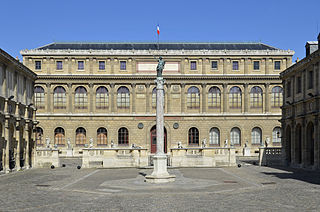
École des Beaux-Arts refers to a number of influential art schools in France. The term is associated with the Beaux-Arts style in architecture and city planning that thrived in France and other countries during the late nineteenth century and the first quarter of the twentieth century.
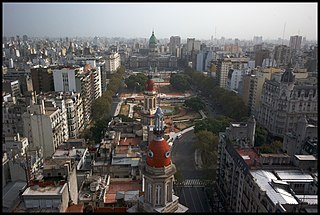
Congressional Plaza is a public park facing the Argentine Congress in Buenos Aires. The plaza is part of a 3 hectare open space comprising three adjoining plazas to the east of the Congress building. The Kilometre Zero for all Argentine National Highways is marked on a milestone at the Plaza.

Horace Lecoq de Boisbaudran was a French artist and teacher.

Anders Bundgaard was a Danish sculptor.
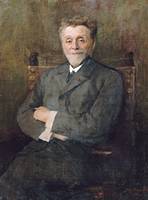
Léonce Bénédite was a French art historian and curator. He was a co-founder of the Société des Peintres Orientalistes Français and was instrumental in establishing Orientalist art as a legitimate genre.

Ernest Chaplet was a French designer, sculptor and ceramist. He was a key figure in the French art pottery movement, and his works are held in international public collections such as the Musée d'Orsay, Paris.
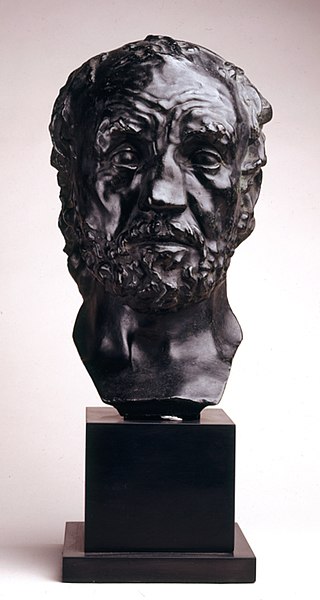
Man with the Broken Nose is a sculpture by Auguste Rodin created between 1863 and 1864 and approved by the Salon in 1875. It is considered the first by Rodin in which life is represented over the grace pervading the academic circles and aesthetic of the time.

Pierre de Wissant is a bronze sculpture by French artist Auguste Rodin, part of his sculptural group The Burghers of Calais. This sculpture represents one of the six burghers who, according to Jean Froissart surrendered themselves in 1347, at the beginning of the Hundred Years' War (1337–1453), in order to save the inhabitants of the French city of Calais from the English laying siege to the city.

Eve is a nude sculpture by the French artist Auguste Rodin. It shows Eve despairing after the Fall.

Adonis Awakens is an 1889 sculpture by the French artist Auguste Rodin. Based on the account of Adonis in Book 10 of Ovid's Metamorphoses, it is signed “A RODIN” on the edge of the base. It is now in the Museo Soumaya in Mexico City.
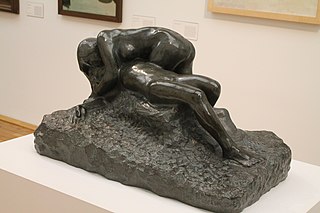
The Death of Adonis is a white marble sculpture. It was created by Auguste Rodin and signed “A RODIN” on the base. It shows Aphrodite mourning over the body of Adonis. The main version is in the Musée Rodin and another is in the Museo Soumaya.

Suzon is an early bust of a woman by Auguste Rodin, created between 1872 and 1873 when he wholly worked on commissions. It was inspired by late 18th century Romantic works whilst Rodin was in exile in Brussels due to the Franco-Prussian War. He created it in homage to Albert-Ernest Carrier-Belleuse, another sculptor also in exile there who was highly influential on Rodin's early works.

La Défense de Paris is a bronze statue by French sculpture Louis-Ernest Barrias. It commemorates the French dead from the Siege of Paris in 1870–71, during the Franco-Prussian War. The sculpture group was unveiled to the west of Paris on 12 October 1883, erected on an existing plinth that had previously supported a bronze sculpture of Napoleon by Charles Émile Seurre, alongside the crossroads between Courbevoie and Puteaux. The location became the La Défense roundabout, but the statue was later removed. The surrounding area was subsumed into Paris as the city expanded later in the 19th and in the 20th centuries; the area became known as La Défense after the statue. The statue was removed to a new location about 1965, and then moved several times before it was placed at its current location near the Arche de la Défense in 2017.




















